Getting Into Warhammer 40K, Part 1: The Basics
I never liked Warhammer 40K because when I buy a game, I want to sit down and start playing. Warhammer is the opposite of that. Getting into the Warhammer hobby is like deciding to go back to college to triple major in Fine Arts, Napoleonic warfare, and Space Opera Biblical Studies—you have to find a mentor, speak to a financial advisor, and plan out the next two years of your life before you buy a single figure.
So if you told me six years ago that I’d be writing an advice column about how to get into Warhammer, I’d ask how much Games Workshop was paying me (none, I swear). If you told me I’d be playing a Nurgle army, I’d ask when I lost my goddamn mind, because of all the factions in Warhammer, I hated the soldiers of the grinning, plague-spewing Chaos god Nurgle the most.
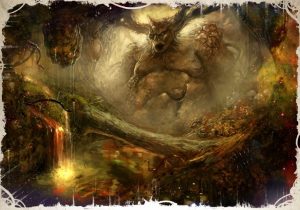
Just look at him.
This article series is going to take you through choosing, assembling, painting, and playing a Warhammer 40K army (specifically, the Death Guard), as well as everything I learn along the way. This isn’t an expert guide, this is an Idiot’s Guide, and I’m the idiot. Luckily, I have my friend Will, who actually knows what he’s doing.

Pictured: a man who knows what he’s doing.
Anyway. This is the story of how I learned to stop worrying and love Warhammer. Or, more specifically, Papa Nurgle.
What the Hell is Warhammer 40K?
If you’re an experienced Warhammer player, you can skip this part—you’ve already finished your triple-major degree, and are probably qualified to teach a course on the basics.
If you’re more of a lurker around the edges of the 40K world (like I was), intimidated by the dense lore and the esoteric world of hobby-craft, here are the basics: Warhammer is a tabletop war game where you buy your figures, glue ‘em together, paint them, then field them to fight battles. You use six-sided dice to determine whether your little soldiers hit or miss and a tape measure to measure distances. Like D&D, you need specific hardback rulebooks to play. Right now, Warhammer is in its 8th edition.
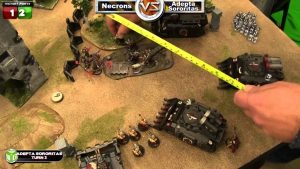
Source: YouTube, MiniWarGaming
If you want to get a handle on the lore, I wrote this article on the magic of Warhammer (which gives some insight into the universe), but the basic idea is this:
40,000 years into the future, humanity has become a fragile, galaxy-spanning theocracy called the Imperium that loves Gothic aesthetics and incredible violence. They are led by their god-like Emperor, who has been preserved in a mechanical shrine called The Golden Throne, and have legions of hulking, genetically engineered guys in armor (Space Marines) and armies of normal-sized people armed with tanks and rifles (Imperial Guard). These guys defend the Imperium against alien races that run the gamut from murderous hiveminds like the Tyranids to sophisticated elf-like civilizations like the Aeldari, as well as the forces of Chaos, which consist of demonic legions that follow the commands of their patron Chaos God—Tzeentch, Khorne, Nurgle or Slaanesh.
Games Workshop has more models on shelves for some factions than others (keep cranking out those Space Marines, GW!), but they generally have enough variety to flesh out whatever army you want to build, whether it’s Imperium, alien, or Chaos (Nurgle’s Death Guard, the army I play, is a Chaos force).
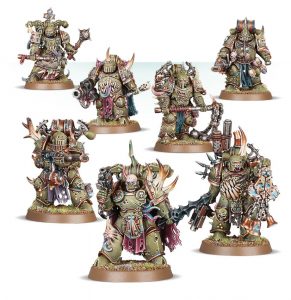
The Death Guards: The Baddest Mothafuckas in the Galaxy
Two important rules about the hobby:
First, be sure to respond to everything you disapprove of with “heresy!” or “goddamn xenos…” Part of the fun of Warhammer is adopting the fanatical, comically narrow-minded rhetoric of the Imperium, which is based around hating heretics and aliens. If you’re on the Chaos side, be sure to shout the slogan of your respective Chaos god, like “Blood for the Blood God!”, at every opportunity.
Second, if you come across any T’au players, be sure to mock them mercilessly. No one likes T’au. Nobody is sure why.
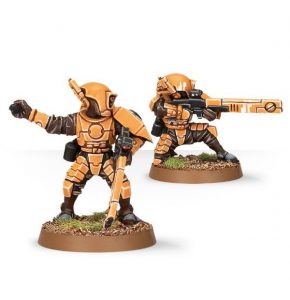
Pictured: T’au, AKA NEERRRRRDDS.
To be honest, the rampant tribalism within Warhammer is part of what convinced me to give it another chance: everyone seemed to have so much fun swearing their undying loyalty to one faction and pledging eternal hatred for all the others that it made me wonder what made them so passionate about the game. So I took a closer look.
How I Opened My Heart to Nurgle
Nurgle is the disgusting, morbidly obese Chaos god of disease, death, and decay in the Warhammer 40K universe. Like I said, I used to hate him most of all—he was just gross. All the flavor text surrounding his armies seemed to be variations of “bubotic, vomitous, oozing hordes of plague-spewing abominations.” Who would think it’d be fun to play as a bunch of misshapen, pus-covered mutants?
But what I didn’t count on was Nurgle himself—despite being the god of death and plagues, Nurgle is oddly the most lovable, humorous, and weirdly benevolent of the Chaos Gods. While other gods have titles like “The Hunter of Souls” and “Changer of Ways,” Nurgle is just Papa Nurgle, passing out his love to all his horribly misshapen followers. In a dark future where there’s only war, Nurgle is a bright ray of sunshine—to him, the perpetual war engulfing the galaxy isn’t a horrifying struggle for survival, it’s a non-stop party.
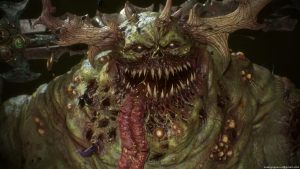
Pictured: A ray of loveable sunshine.
Once I understood Nurgle, my whole perspective on his armies changed. Controlling hordes of disease-ridden Poxwalkers appealed to my love of necromancers and zombie armies (one of my D&D characters actually tried to siege a city with anthax-carrier zombies), and all the rust and buboes and weird chitinous growths seemed refreshingly organic and interesting compared to the smooth metal armor plates of the Space Marines and Eldar.
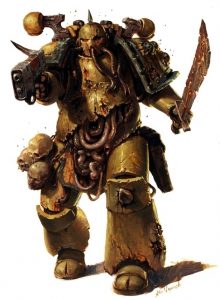 On top of that, Nurgle’s force of heretic Space Marines, the Death Guard, is terrifying—Plague Marines are silent, disciplined murderers entombed in power armor, surrounded by invisible clouds of viruses. They carry around giant death-knell bells that rip apart souls, and their scribes wander around looking for omens in flies, wounds, and puddles of acid. Sure, Khorne has bloodthirsty berserkers and shirtless Mad Max-looking motherfuckers, but Nurgle is packing unkillable typhoid juggernauts.
On top of that, Nurgle’s force of heretic Space Marines, the Death Guard, is terrifying—Plague Marines are silent, disciplined murderers entombed in power armor, surrounded by invisible clouds of viruses. They carry around giant death-knell bells that rip apart souls, and their scribes wander around looking for omens in flies, wounds, and puddles of acid. Sure, Khorne has bloodthirsty berserkers and shirtless Mad Max-looking motherfuckers, but Nurgle is packing unkillable typhoid juggernauts.
So when my friend Will asked if I wanted to go in on a $160 Dark Imperium box, which has everything you need for a Death Guard army and a Primaris Space Marine force, I said “Hell yes.”
THE EMPEROR WANTS YOU!
So despite all the odds, I ended up dropping a couple hundred dollars on a Nurgle army. Since then, I’ve learned about all the different Plague Marine companies, the ins and outs of Death Guard strategies and weapons, and even played a couple mock games against Will. No one was more surprised than me by all this, but now that I’ve started playing with them, I wouldn’t give up my mutated little murder squads for anyone.
But that’s me. In the next article, I’m going to take you through picking the right faction for YOU.
Again, Games Workshop isn’t paying me a single cent to write all this. In fact, I’m paying them money to buy all this goddamn paint, then telling you how great they are. This is the insidious genius of Games Workshop. But it is fun.


This article made me fall in-love with Warhammer 40k again. Thank you infinitely.
So if I Google “warhammer 40k basics”, this page is the first hit (even before the GW site). I’ve read your first few Parts and I’m loving it. Thank you for this. 🙂
For others looking, here are the links to them (it’s surprisingly hard to get to the next part):
1. https://fantasy-hive.co.uk/2018/05/warhammer-40k-basics/
2. https://fantasy-hive.co.uk/2018/06/warhammer-40k-choose-faction/
3. https://fantasy-hive.co.uk/2019/03/warhammer-allies/
4. https://fantasy-hive.co.uk/2019/11/warhammer-40k-beginner-build-army-fight/
Looking forward to Part 5 (4b?). 🙂
Thank you for providing the links, I’m sorry they’re not more clearly signposted! I’ll have to see if I can update the post.
[…] you haven’t read the previous articles on the basics, choosing your faction, or choosing your allies, go back and read those suckers. Otherwise, […]
[…] we’re back with more Warhammer! Be sure to check out Part 1 and Part 2 to get the full […]
[…] I think it’s most important to choose an army that excites you, either because their playstyle fits yours, the lore fascinates you, or their units look awesome. If you haven’t read my journey toward loving Nurgle and the Death Guard, you can read that here. […]